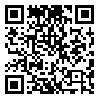Thu, Dec 25, 2025
[Archive]
Volume 38, Issue 1 (1-2024)
Med J Islam Repub Iran 2024 |
Back to browse issues page
Download citation:
BibTeX | RIS | EndNote | Medlars | ProCite | Reference Manager | RefWorks
Send citation to:



BibTeX | RIS | EndNote | Medlars | ProCite | Reference Manager | RefWorks
Send citation to:
Moradi-Joo E, Barouni M, Vali L, Mahmoudian S. Qualitative Analysis of Newborn Hearing Screening Program in Iran. Med J Islam Repub Iran 2024; 38 (1) :146-154
URL: http://mjiri.iums.ac.ir/article-1-8991-en.html
URL: http://mjiri.iums.ac.ir/article-1-8991-en.html
School of Management and Medical Informatics, Health Services Management Research Center, Institute for Futures Studies in Health, Kerman University of Medical Sciences, Kerman, Iran , mohsenbarooni@gmail.com
Abstract: (1682 Views)
Background: Early diagnosis of hearing loss and timely interventions are important to minimize the consequences of this condition, especially for children. This research was conducted to analyze the newborn hearing loss screening program in Iran.
Methods: This qualitative study was conducted using the content analysis method and based on the CIPP model in 2023. The snowball method was used to recruit a sample with maximum diversity. The criteria for selecting people for interviews included having at least three years of experience in the newborn hearing loss screening program and sufficient knowledge in the field. To ensure the reliability of the results, four criteria proposed by Lincoln and Guba were used. Data analysis was conducted by MAXQDA2022 software.
Results: In the current research, using content analysis in the form of the CIPP model, based on the viewpoints of the interviewees (40 people), the management requirements of the newborn hearing loss screening program were categorized into the four main categories of context (texture), input, process, and output. Eight subcategories were identified in the context dimension, four subcategories in the input dimension, seven subcategories in the process dimension, and four subcategories in the output dimension.
Conclusion: According to the findings of this research, in order to properly implement the newborn hearing loss screening program, there is a need to conduct pilot studies, need assessments, evidence-based programs, and epidemiological studies and to prioritize services and resources. Also, communication between service delivery levels needs to be improved, and attention should be paid to personnel motivation and screening programs.
Methods: This qualitative study was conducted using the content analysis method and based on the CIPP model in 2023. The snowball method was used to recruit a sample with maximum diversity. The criteria for selecting people for interviews included having at least three years of experience in the newborn hearing loss screening program and sufficient knowledge in the field. To ensure the reliability of the results, four criteria proposed by Lincoln and Guba were used. Data analysis was conducted by MAXQDA2022 software.
Results: In the current research, using content analysis in the form of the CIPP model, based on the viewpoints of the interviewees (40 people), the management requirements of the newborn hearing loss screening program were categorized into the four main categories of context (texture), input, process, and output. Eight subcategories were identified in the context dimension, four subcategories in the input dimension, seven subcategories in the process dimension, and four subcategories in the output dimension.
Conclusion: According to the findings of this research, in order to properly implement the newborn hearing loss screening program, there is a need to conduct pilot studies, need assessments, evidence-based programs, and epidemiological studies and to prioritize services and resources. Also, communication between service delivery levels needs to be improved, and attention should be paid to personnel motivation and screening programs.
Keywords: Program analysis, Hearing loss screening program, infants, Iran, CIPP model, Directed qualitative
Type of Study: Original Research |
Subject:
Public Administration & Health management and economics
Send email to the article author
| Rights and permissions | |
 |
This work is licensed under a Creative Commons Attribution-NonCommercial 4.0 International License. |








